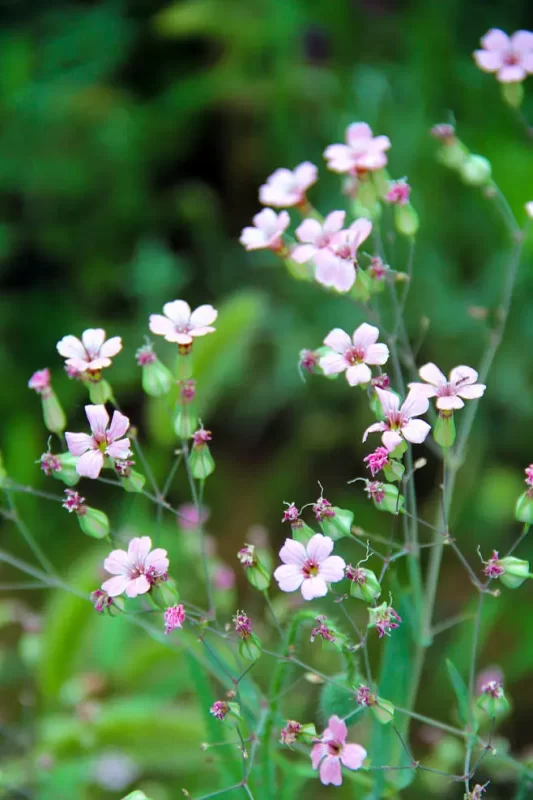
Origin distribution:
It is native to Asia Minor and the Caucasus, and is cultivated in some countries in Europe, Asia and North Africa.
Morphological characteristics:
It is an annual herbaceous plant. The plant height is 30-45cm, the whole plant is smooth, covered with white powder, multi-branched, slender, and the leaves are opposite and lanceolate. The petals are 5, pure white or pink, obovate. The flower diameter is 6mm, the pedicels are slender, and they are spread out conical cymes. The capsule is round and matures from July to September.
Growth habits:
Cold-resistant, avoid hot and rainy weather. It should grow in a sunny environment and loose, fertile, well-drained slightly alkaline sandy loam soil. Flowering period from June to August
Garden use:
Gypsophila paniculata L. have slender leaves, many branches, and starry flowers. They are light and elegant and can be used in Youlite flower beds, flower borders or flower bushes. It can also be used for flower arrangements and is an ideal flower material for making dried flowers.
Breeding and cultivation:
Reproduction is mainly by sowing. It is advisable to sow in spring in cold areas and in autumn in areas where the soil does not freeze. The optimal germination temperature is 21-22°C. Seedlings emerge in 7-10 days. After planting, pinch the top when it reaches about 8 nodes, and wipe the buds when the side buds reach 5-10cm to remove the weak ones and leave the strong ones. Water frequently in the early stages of planting, and control water appropriately when flower buds begin to form.
